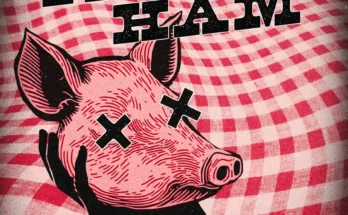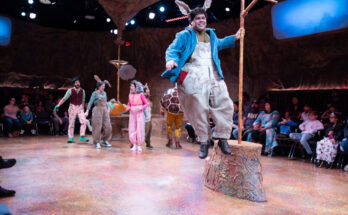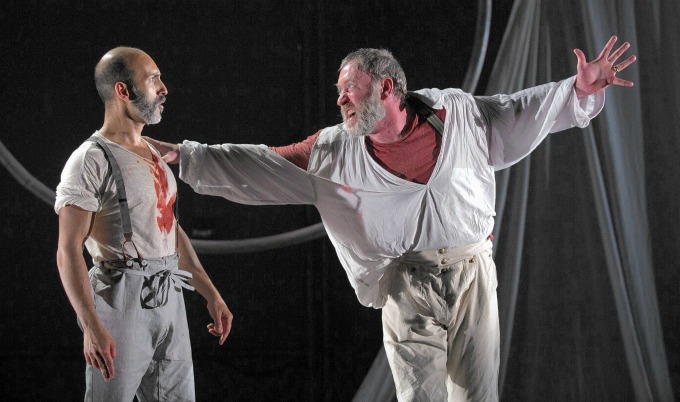
THE SEAFARING CLASSIC ‘MOBY DICK’ TICKLES THE SKIES IN LOOKINGGLASS ADAPTATION AT THE ALLIANCE THEATRE
::
“Moby Dick” runs Oct. 12-30 on the Alliance Theatre’s mainstage.
MANY YEARS AGO, theaters would sometimes hire unemployed sailors to work as stagehands. These sailors carried some of their nautical ideas and nomenclature backstage, which is why sets are raised and lowered with rigging and pulleys, like sails, and actors walk on the “deck.”
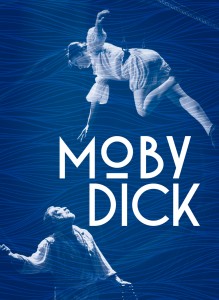 It’s a well-traveled bit of theater lore, even though some scholars maintain it’s largely fiction. But fact or legend or a little of both, David Catlin embraces the connection because it dovetails so perfectly with his high-flying adaptation of Moby Dick, which combines Cirque du Soleil-style acrobatics with Herman Melville’s dense 19th-century allegorical whaling epic.
It’s a well-traveled bit of theater lore, even though some scholars maintain it’s largely fiction. But fact or legend or a little of both, David Catlin embraces the connection because it dovetails so perfectly with his high-flying adaptation of Moby Dick, which combines Cirque du Soleil-style acrobatics with Herman Melville’s dense 19th-century allegorical whaling epic.
Catlin is a founding member of Chicago’s Lookingglass Theatre, which brought the hallucinatory Lookingglass Alice (as in Wonderland) to the Alliance Theatre in 2010, and which returns with this even more imaginative and challenging adventure, presented in association with Chicago’s Actors Gymnasium. The Alliance is the first theater outside Chicago to stage the production, which will then travel to the Arena Stage in Washington, D.C., and South Coast Rep Costa Mesa, Calif.
When Melville published Moby-Dick; or, The Whale in 1851, it was a failure. The London Observer called it “a rhapsody run mad,” and it was not until well into the 20th century that literary critics elevated it to the high shelf of Great American Novel, even if it’s one that generations of literature majors have never finished.
“It is a hard book,” Catlin says. “It is a slog. There are parts of it that I did not love when I was reading it the first time.”
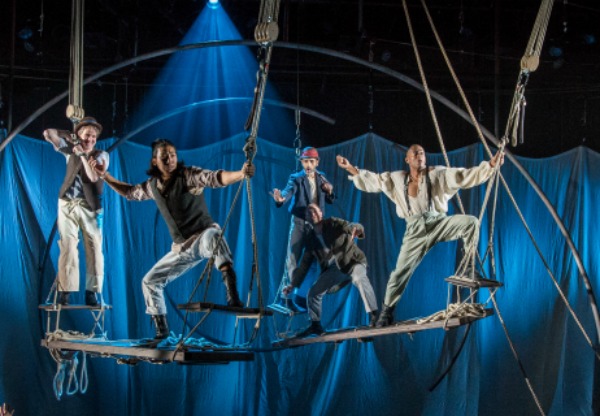
He was a student at Northwestern University then, “and not the best student,” he says. “I was taking a class in American literature and I put it off and put it off. Finally, I made many batches of espresso and stayed awake for two days straight and read it in a caffeinated blur. And loved it.”
More than 20 years later, Catlin began the process of adapting Moby Dick for the stage with the help of Chicago’s Actors Gymnasium, a circus and performing arts organization. Catlin envisioned that the way sailors would swing through the rigging on a 19th-century whaling vessel like the Pequod could be expressed by trained acrobats and aerialists.
“We don’t have circus elements in every show we do, but a lot of our shows have aspects of circus,” he says. “We also have elements of dance, traditional theater, elements that have a Shakespearean feel, and it has sort of a Gothic horror story feel to it.
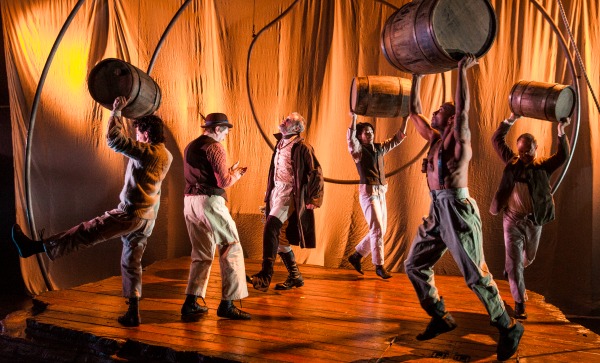
“And that’s because Melville himself uses all different kinds of linguistic styles,” Catlin says. “He will have language that is straight out of the theater, like ‘Curtain raises on the foredeck. Enter Ahab.’ He has language that is on the verge of verse. He has sections that seem encyclopedic. That invites different kinds of storytelling in a dramatic version.”
It also demands a creative set, which, with the Alliance staging, is modified a bit from the original.
“The set was built for Lookingglass, which is a black box, and not a very big black box,” Catlin says. “It will have somewhat of a different feel with the Alliance. The stagehands are very integral to the production. You see them onstage, and they contribute greatly to the action. We spend time training them. Those will all be Alliance people.”
The Pequod, the Chicago Tribune noted, is represented by a series of curved poles, which are masts, “but that also can form the carcass of the great antagonistic beast, thus suggesting that Moby Dick is on board the Pequod even before the vessel sets sail from Nantucket. For Moby Dick lurks inside us all.”
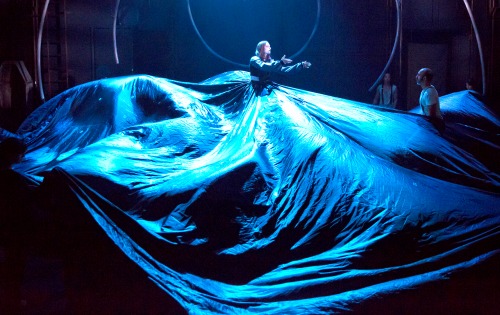
And what of the leviathan himself, who symbolizes so much in the novel? In this production, Moby Dick is represented by three actresses dressed in white who work synchronously.
“Moby Dick is set up throughout the book,” says Catlin. “If we have done our job, then the audience’s imagination has created a whale beyond anything that can be realistically rendered.”
There are no women in the book Moby Dick, but there are three women in this adaptation. “First they are wives and mothers saying goodbye to the whalers in Nantucket,” says actress Kasey Foster, “then they become like the Sirens in The Odyssey,” she explains, “luring them forward to their doom.”
They are also the Fates, “the driving force behind every decision made for these characters,” she says.
Eventually, they become the whale itself: Ahab’s fate. He has chased his obsession to its inevitable end, which is never in doubt.

